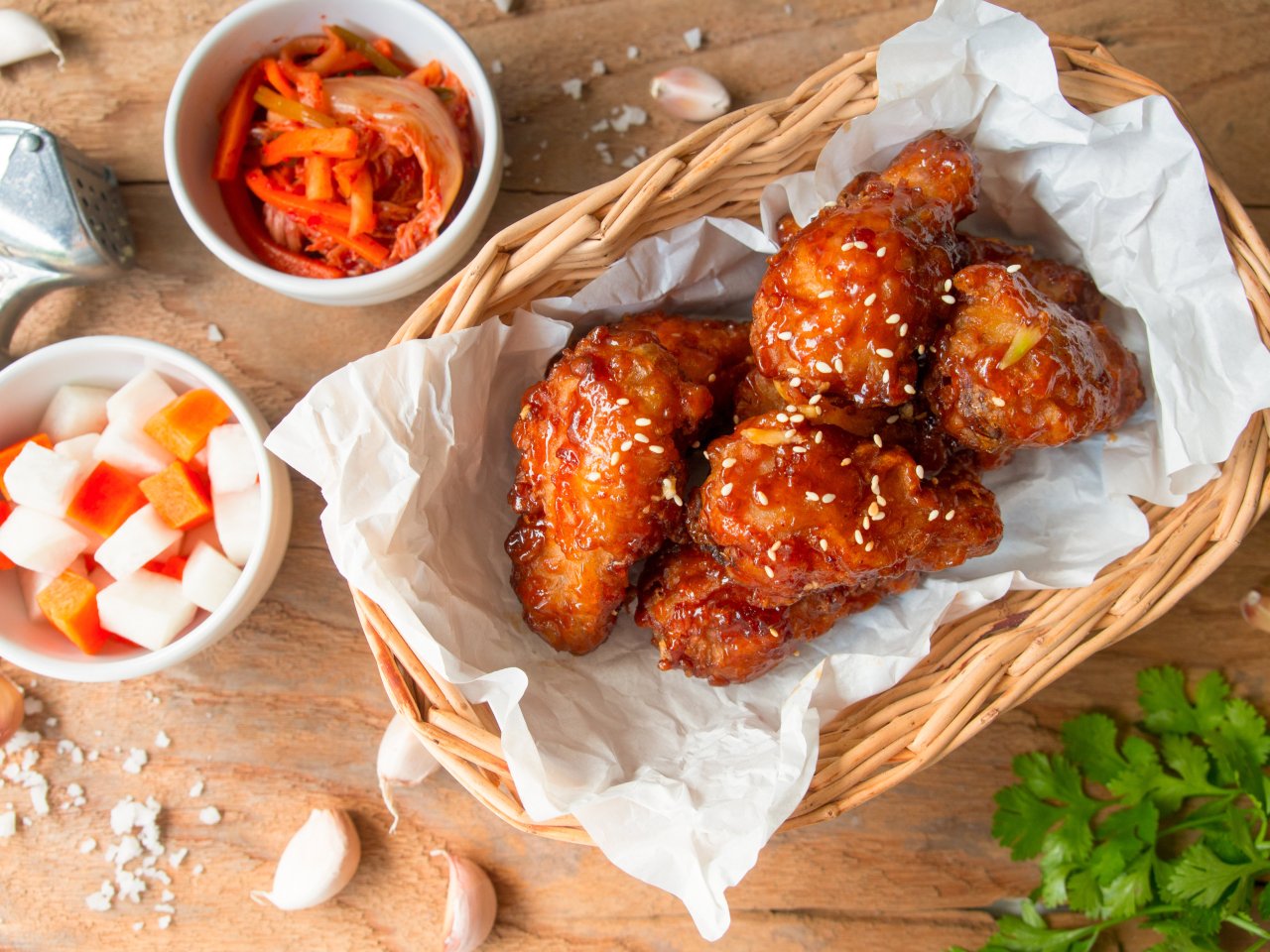60% of locals say K-fried chicken ‘not Korean’: survey
By Kang Jae-eunPublished : Dec. 27, 2021 - 17:42

Six out of 10 Koreans do not think fried chicken is Korean food, or hansik, according to a survey from a public institution released Monday.
The results come from a survey conducted by the Korea Food Promotion Institution in October on 1,500 Korean nationals aged between 19 to 69. Respondents were shown 30 dishes commonly enjoyed by locals and asked whether they thought the dish was “Korean” or not.
Only 36.1 percent of respondents answered Korean style fried chicken -- without sauce -- was ”Korean.” Fried chicken seasoned in sauce, however, was considered “Korean” more often than its sauce-free counterpart, with nearly 55 percent of people polled saying the dish was “Korean food.”
In an earlier poll conducted by the same institution on 8,500 foreigners living in 17 countries, 16.1 percent of the respondents chose Korean fried chicken -- with or without the sauce -- as the most preferred Korean dish.
Although fried chicken was the most popular Korean food among foreigners, ironically Koreans do not consider the dish “Korean.”
Kimchi was seen as the most Korean dish of them all, with 99.7 percent of those surveyed saying they see the fermented vegetable dish as hansik.
Among others, doenjangjjigae, or soybean paste stew; buchimgae, Korean-style pancake; japchae, or stir-fried glass noodle and vegetables; and kimbab were some of the most top-rated hansik dishes according to the respondents, with more than 90 percent of those polled identifying them as traditional to Korea.
Some 55 percent of respondents said they consider chapaguri -- a mixture of Nongshim’s Chapaghetti black bean instant noodles and soup-based Neoguri ramen -- “Korean.” The dish became famous after being featured in the Oscar-winning film Parasite.
Patbingsu, or shaved ice with red bean toppings, mandu and ramyun were less “hansik-like” according to the survey, with less than 50 percent of respondents considering the three dishes ”Korean-style.”
When asked what keywords they associated with hansik, 15.5 percent answered “kimchi,“ while 13.1 percent said “healthy.“


















![[Today’s K-pop] BTS pop-up event to come to Seoul](http://res.heraldm.com/phpwas/restmb_idxmake.php?idx=642&simg=/content/image/2024/04/17/20240417050734_0.jpg&u=)